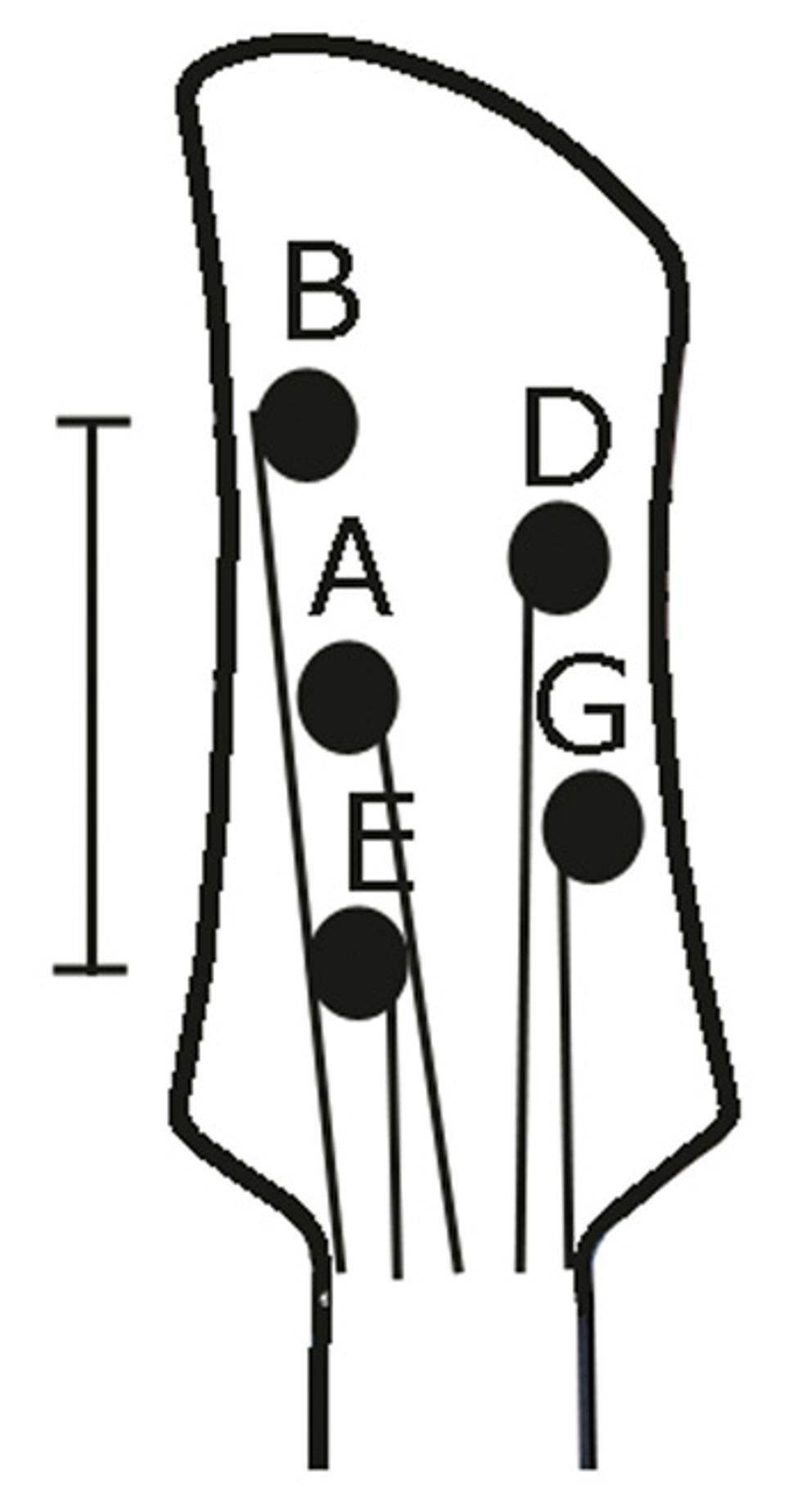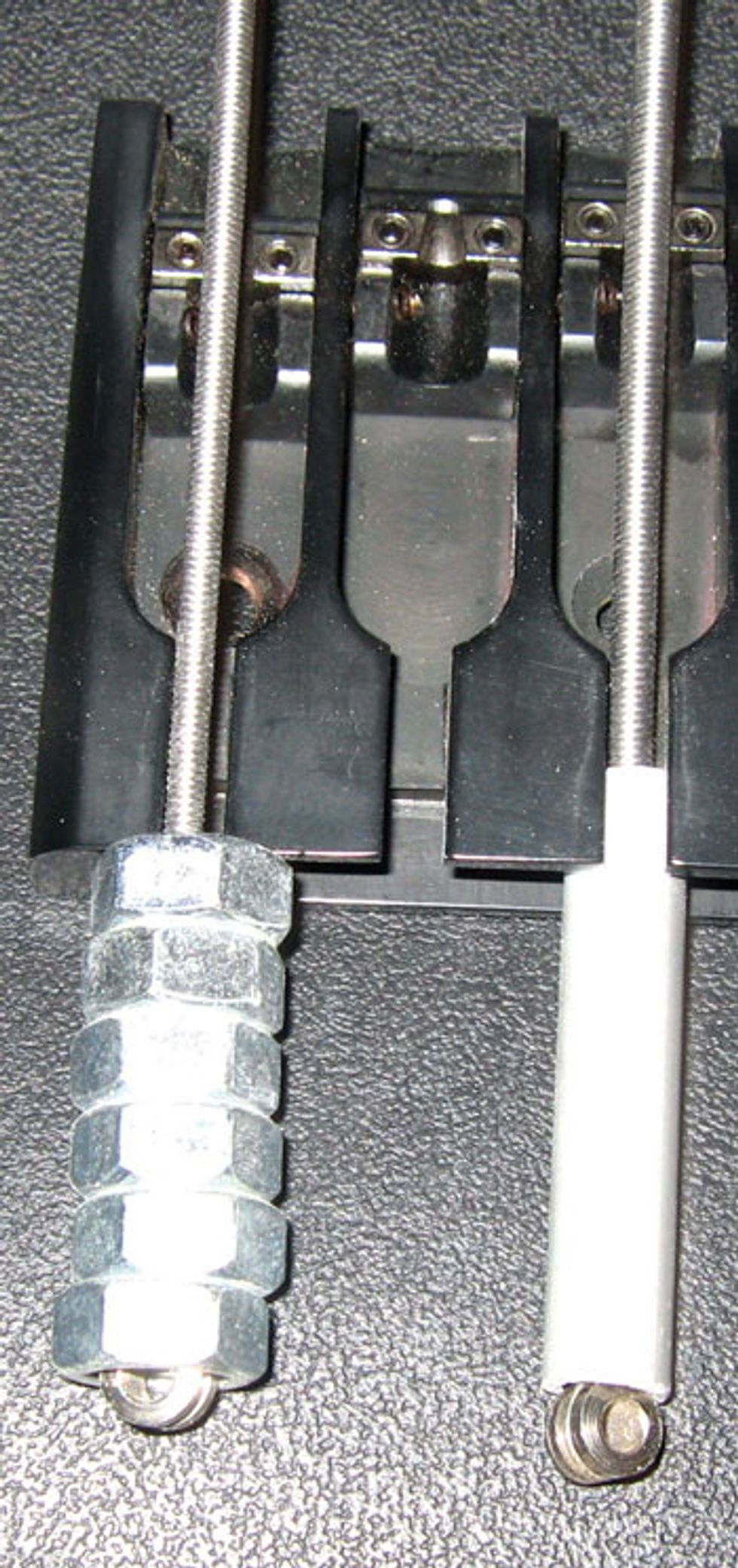
Fig. 1. This creatively rearranged headstock creates a longer low-B 5th string.

Fig. 2. Two systems for lengthening the 5th string at the bridge. The commercial model on the right is an aluminum tube.
In the “good old days,” basses had four strings, the music grooved, and bass players knew their place and role in the band. And then someone gave them a 5th string, and before long the first bass soloists showed up and demanded a 6th string (or even more).
While adding higher-pitched strings to a bass was a no-brainer, the low B often caused problems. Players found it too floppy and undefined, or complained that its sound didn’t blend in with the rest of the strings. Many manufacturers—and especially smaller custom builders—answered this complaint by making fretboards with extra-long scales, or adding fanned frets and so on. In the process, some less-than-brilliant ideas popped up.
Ever heard the “longer is tighter” argument? The reasoning behind it goes like this: For a given scale length, string, and pitch, you can increase tightness and bass output by adding string length behind the bridge or nut. For many, this conflicts with what they learned in their first school physics classes, but the argument pops up so often (even among well-known luthiers) that it’s worth taking a closer look.
Fig. 1 illustrates one manufacturer’s attempt to put the longer-tighter theory into practice. In this headstock drawing, the low-B tuner is moved to the top to increase the 5th string’s length behind the nut. The builder must have been very convinced of the concept because in the process of executing this design, he scrambled the succession of the tuners, mixed rotational directions, and surrendered the straight alignment of the strings.
Fig. 2 shows two DIY ways to lengthen the 5th string at the bridge. The commercial model—an aluminum tube—was called the “B-string extender” and well promoted.
So do these approaches work? Let’s look at the extremes: If extending the 5th string at the nut truly tightens the tension and increases low frequencies, a headless bass would have the floppiest B with the least amount of bass.
Or imagine this: You have a standard headstock, but instead of attaching the string normally, you bend it around the headstock, lead it all the way back to the body, and tune there. It’s a great way to get a tighter string and bassier tone, right? Just think, in the studio, you could attach a bass to a stand and run the string across the room. It might be so tight, you’ll need a hammer to pluck it, but the tension would tear down walls! Or how about bringing a cable drum with a rolled up string onstage? Yes, this sounds like nonsense.
Why doesn’t this work? Here’s the formula for calculating tension (T) or pull of a string of a specific weight (w) per inch or centimeter, at a given scale length (l) and frequency (f ): T = x* w* (l* f )²
Note: (x) is a simple constant, depending on your numerical system. FYI, the tension of a .130" B string at 30.9 Hz is about 32 pounds or nearly 15 kilos.
Use a thicker string with increased specific weight and get more tension. Same thing if you tune higher or use a longer scale length. Sorry for all the math content, but you can easily see there’s no mention of any extra length behind the nut or bridge.
Now let’s consider elasticity—essentially the technical term for the “tightness” we feel when plucking a string. We’ll skip the formula, but elasticity is a term that’s defined by length: the longer, the more elastic—at least for an “ideal” friction-free bridge and nut. Once there is measureable friction, there will be no difference at all.
So once we add length to that passive part of the string using this kind of B-string extender, all we get is less tuning stability and in the worst case, even less tension.
There are ways you can beef up your low B. These include getting a new, stiffer neck, improving the body-neck connection, or simply trying a different set of strings. (D’Addario offers an extensive list of string parameters, which can be helpful as you explore and experiment with strings.) If you like a particular set of strings, but the low B doesn’t work on your bass, why not simply try out a variety of individual B strings?
If you’re still not convinced about the low-B extender, give that cheap, multi-nut DIY mod a chance. But keep in mind it will add mass to the bridge. Whatever that does to your tone, it will not alter the string tension.
 Heiko Hoepfinger is a German
physicist and long-time bassist, classical
guitarist, and motorcycle enthusiast. His
work on fuel cells for the European orbital
glider Hermes got him deeply into modern
materials and physical acoustics, and
led him to form BassLab (basslab.de)—a
manufacturer of monocoque guitars and basses. You can
reach him at chefchen@basslab.de.
Heiko Hoepfinger is a German
physicist and long-time bassist, classical
guitarist, and motorcycle enthusiast. His
work on fuel cells for the European orbital
glider Hermes got him deeply into modern
materials and physical acoustics, and
led him to form BassLab (basslab.de)—a
manufacturer of monocoque guitars and basses. You can
reach him at chefchen@basslab.de.






![Rig Rundown: AFI [2025]](https://www.premierguitar.com/media-library/youtube.jpg?id=62064741&width=1245&height=700&quality=70&coordinates=0%2C0%2C0%2C0)












 Shop Scott's Rig
Shop Scott's Rig




![Rig Rundown: Russian Circles’ Mike Sullivan [2025]](https://www.premierguitar.com/media-library/youtube.jpg?id=62303631&width=1245&height=700&quality=70&coordinates=0%2C0%2C0%2C0)










































